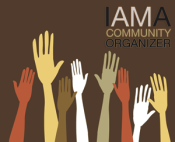How can you tell whether an alleged act or acts reflect and are symptomatic of Extreme Color-Aroused Ideation, Emotion and Behavior Disorder? In criminal cases, among other evidence, people's statements (verbally expressed ideation) may reflect their hate, fear, envy, jealousy, or even curiosity, love, lust, empathy and caring, based on skin color.
For example,
CNN is reporting the alleged hate crime [against] James Craig Anderson, a 49-year-old auto plant worker, who was beaten and then murdered [run over by a truck driven] by a group of white teens intent on hurting a black person. Deryl Dedmon, Jr., 18, of Brandon, Mississippi and his friends were at a party drinking when Dedmon allegedly told friends they should leave, saying "let's go fuck with some niggers," according to law enforcement officials.
When ideation and emotion are based on skin color, and skin color is the cue for a person to commit a criminal act, then you have a color-aroused behavior that, in many cases, may bring civil and criminal penalties. It is important to note that it is the illicit behavior that may bring civil and criminal punishments, while these punishments would NOT result from "mere" extreme color-aroused ideation and emotion, without the illicit behavior. The illicit behavior is a key symptom sometimes present in Extreme Color-Aroused Disorder.
Is all color-aroused violence a "hate crime"? As a legal matter it might be, but as a matter of psychology, not necessarily. If the white-skinned Dedmon killed the victim because the white anti-black antagonist was jealous of Black people and their Black President, then the crime might factually be a crime of envy, hate, jealousy and vengeance. If you if you imagine Dedmon in his first meeting with the prison psychologist, his resentments against Black people may be based on a number of emotions, since virtually no one feels only hate, consciously and unconsciously. Everybody has a panoply of feelings. A white man might
hate a Black US Senate candidate because he
fears the Black candidate will be elected.
I am painfully aware that a lot of Black people and white people believe that any attempt to undertand psychologically why a culprit did what he did risks that the culprit may be perceived as not as culpable for what he did, and therefore might receive a lesser sentence, if he receives a sentence at all.
In this case, where there is video cam evidence and where Dedmon admitted his crime after the fact, Dedmon could receive a strong prison sentence, unless his case is tried before an all-white jury. Perhaps the case may be tried before an all-white jury, and then Dedmon might go free, in spite of his crime that was based on anti-Black antagonistic ideation, emotion and criminal behavior.
When a person assaults and kills a stranger based on the skin color of the victim and the skin color of the accused, then that is a strong indicator that the culprit has Extreme Color-Aroused Disorder, since no one without the disorder would risk imprisonment for the purpose of targeting a stranger based on skin color. Only a person with Extreme Color Aroused Disorder would do that. Disorder is "extreme" when, among other facts:
- The behavior violated laws such that it could bring or be likely to lead to criminal charges or civil liability against the assailant(s);
- The assailants did not know the victim and were looking to harm someone, anyone, based on his brown skin color;
- The assailant risks that the man they attack might be armed or have friends nearby, and so attacking the victim could very well lead to physical harm for the assailants;
- The assailants did not stand to gain or save any money through this behavior, but could only lose money so the assailants' behavior was not self-interested but was likely to be self-destructive;
- The assailants run the risk of spending time in jail or even being executed for their crime;
- The assailants lose social, political and potential professional opportunities as a result of the behavior.
The above focuses on the irrational and self-destructive nature of the behavior, which is indicative of Extreme Color-Aroused Disorder (ECAD). Of course, behavior can be self-interested (i.e. stealing from someone based on their skin color) and still be symptomatic of Extreme Color Aroused Disorder.
When the accused Mr. Dedmon has gets to prison and speaks with the prison psychologist for the first time, Dedmon might well reveal that he was envious of Black people, many of whom have successful jobs, nice cars and a happy future ahead of them.
Is it wrong to acknowledge that a crime might have been motivated by color-aroused envy or color-aroused jealousy and/or color-aroused fear, as well as color-aroused hatred?
If a Black man kills a white man because he fears that the white man will take his wife, based on his knowledge that his wife has a thing for white men, then the killing of a white man by a Black man could be aroused by jealousy, envy and fear that leads to antagonistic behavior. If this seems complex, it is. Human beings are believed to have powers of feeling, thought and behavior that others in the animal kingdom do not have. If you accept that proposition, then you must also accept that human minds are copiously full of all sorts ideation and emotion that sometimes lead to behavior.
If you hear anyone trying to describe all of this with one word, e.g. "racism" or "hate," then you know that person simply has not taken the time and effort to understand the mechanics of color-aroused ideation, emotion and behavior, and they may even be averse to complex thought about inherently complex people.


